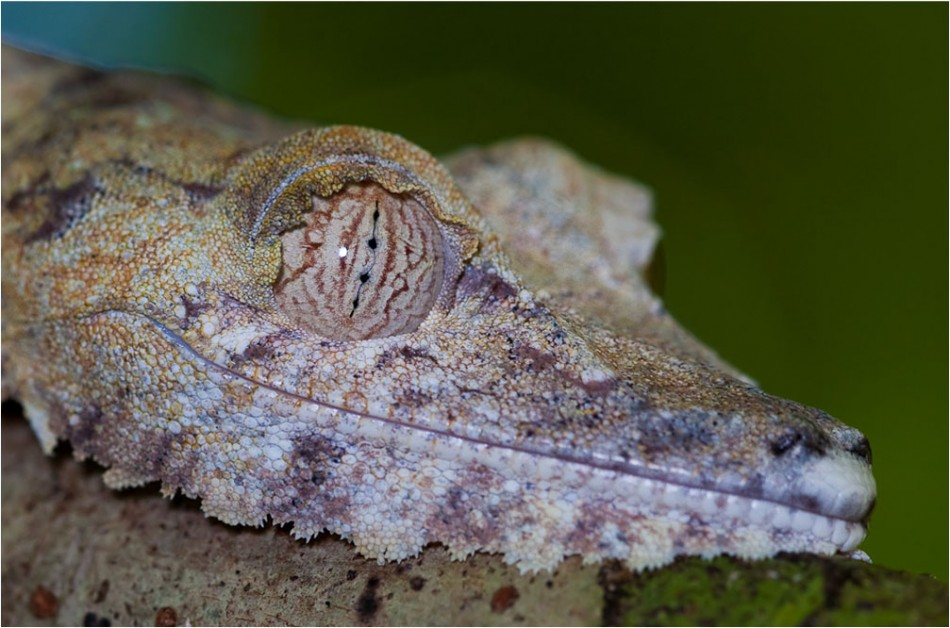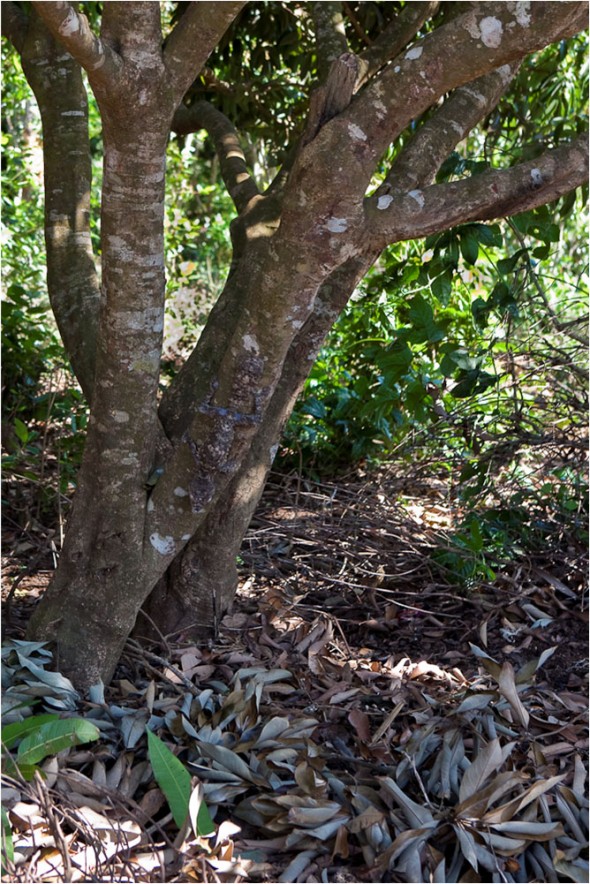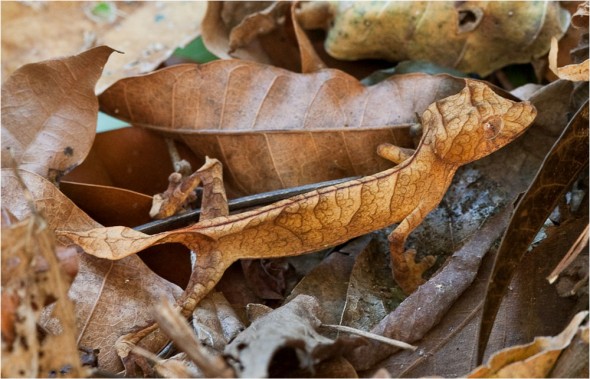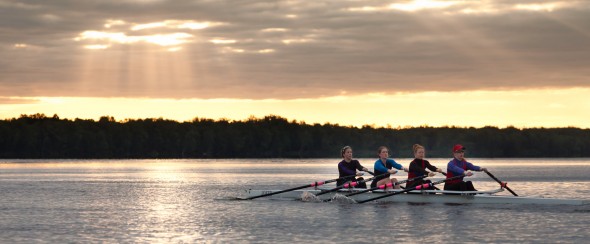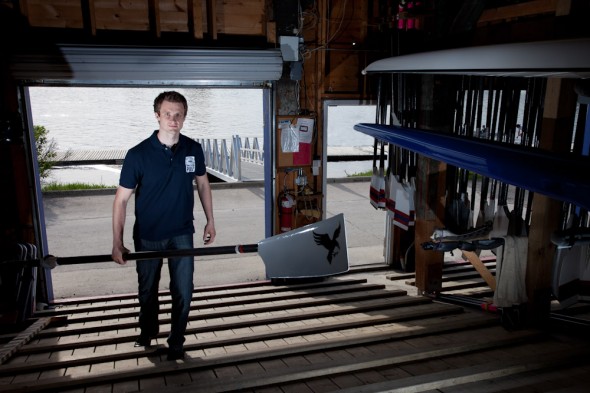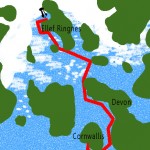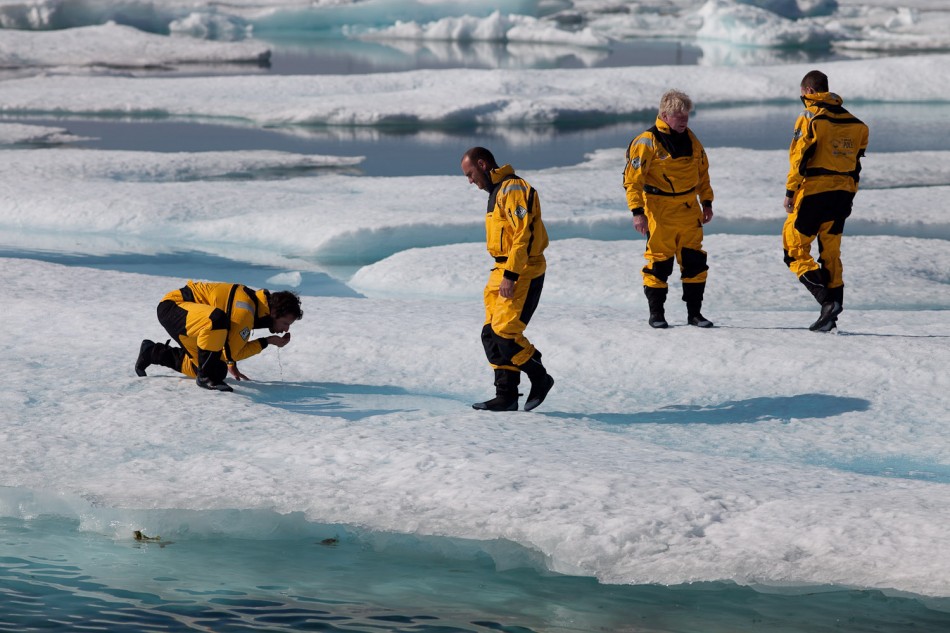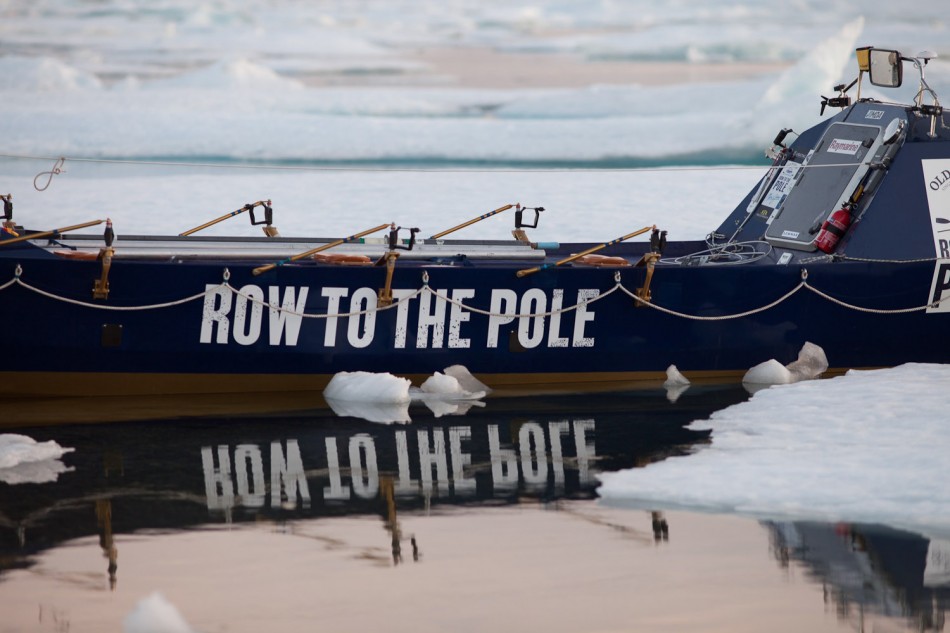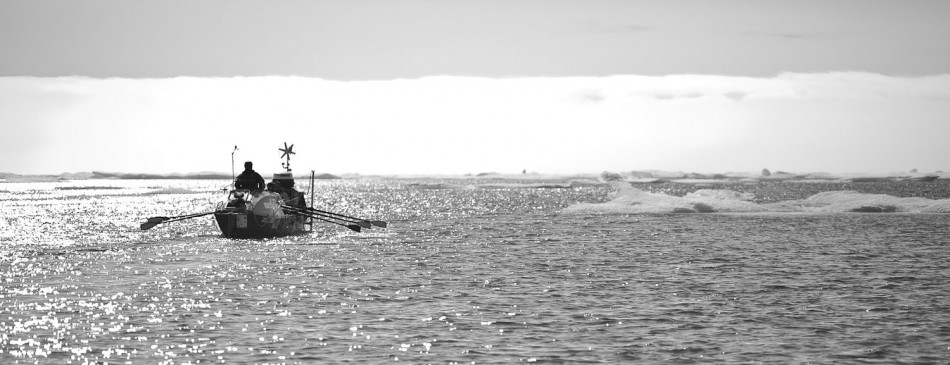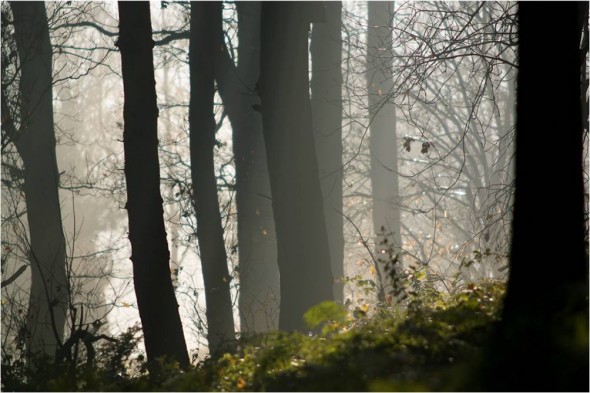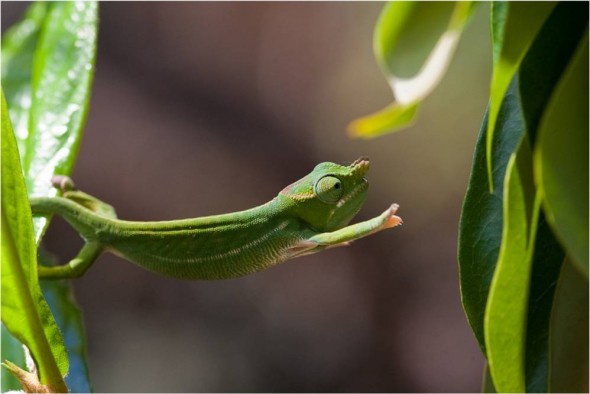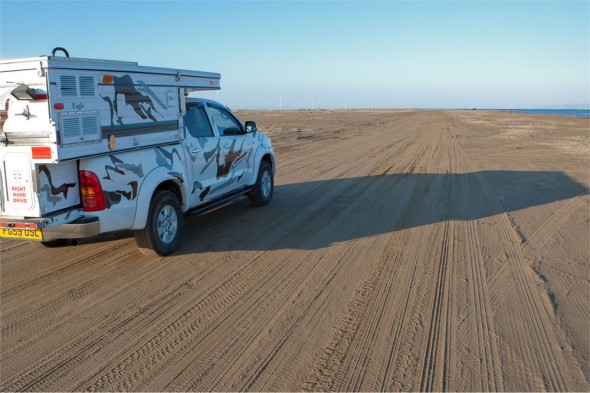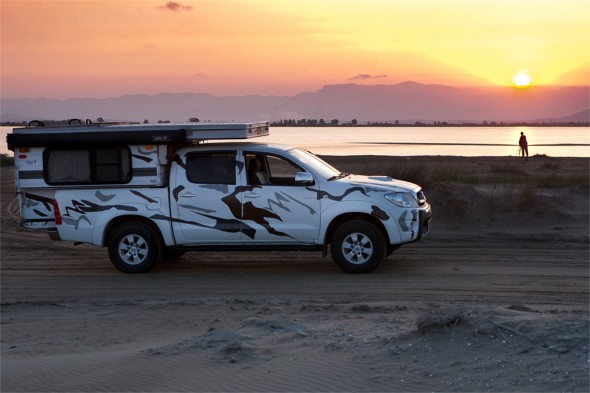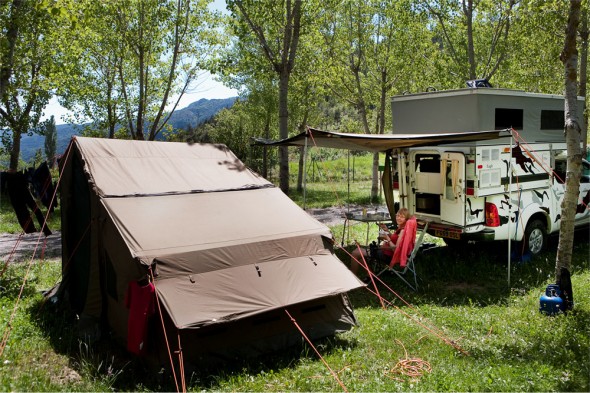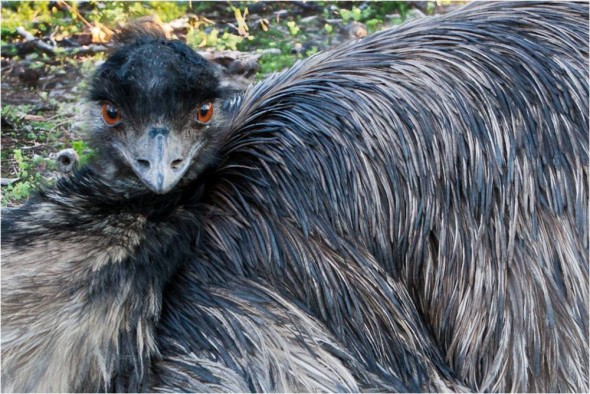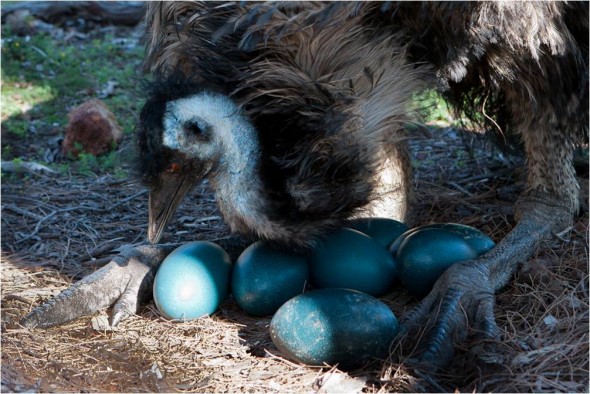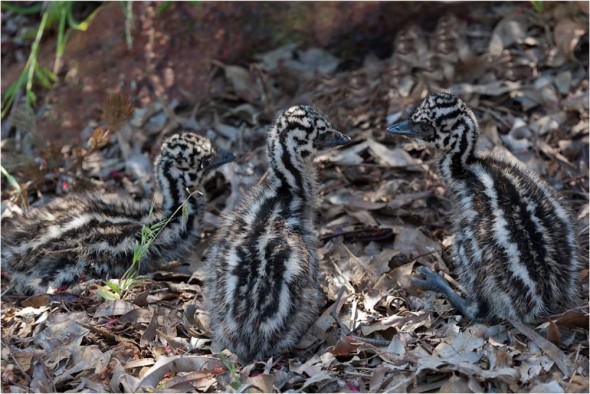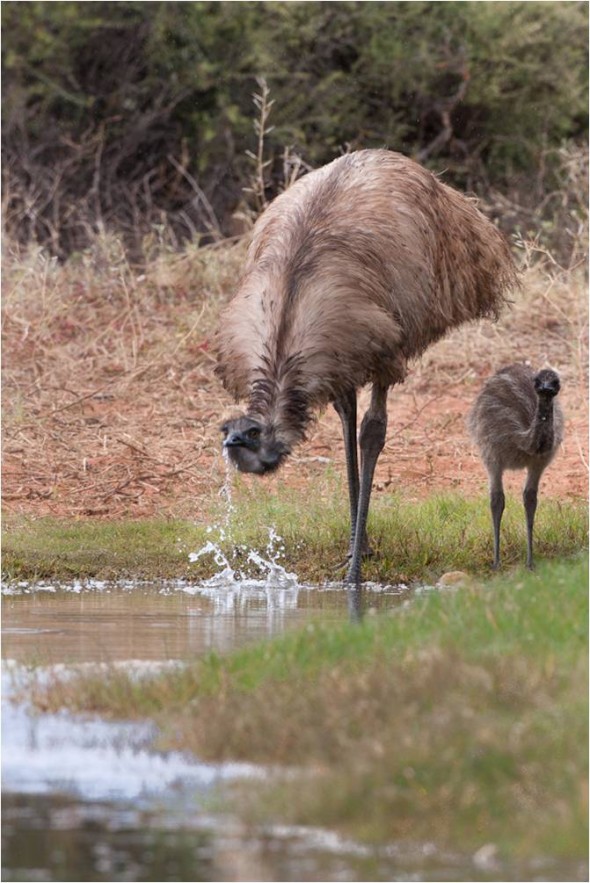Leaf-tailed geckos (Uroplatus sp) are found only in Madagascar and are nature’s masters of camouflage. They are nocturnal hunters of the tropical rainforests. When resting during the day, they need to hide from predators. They achieve this in spectacular fashion by adopting various strategies to give themselves a cloak of invisibility. This certainly gives a challenge to the wildlife photographer.
The Leaf-tailed Gecko (above) has a ragged frill of skin over its eye which breaks up its outline. A ragged flap also extends around the sides of the Gecko, this merges with the tree trunk and prevents a shadow appearing.
The Giant Gecko (above) changes its skin colour, such that it is almost indistinguishable from that of the tree. Can you see it halfway up on the right hand tree trunk?
Ebenau’s Leaf-tailed Gecko mimics dead leaves. Even the dark veins of leaves are copied, so that this animal becomes invisible amidst the vegetation.

